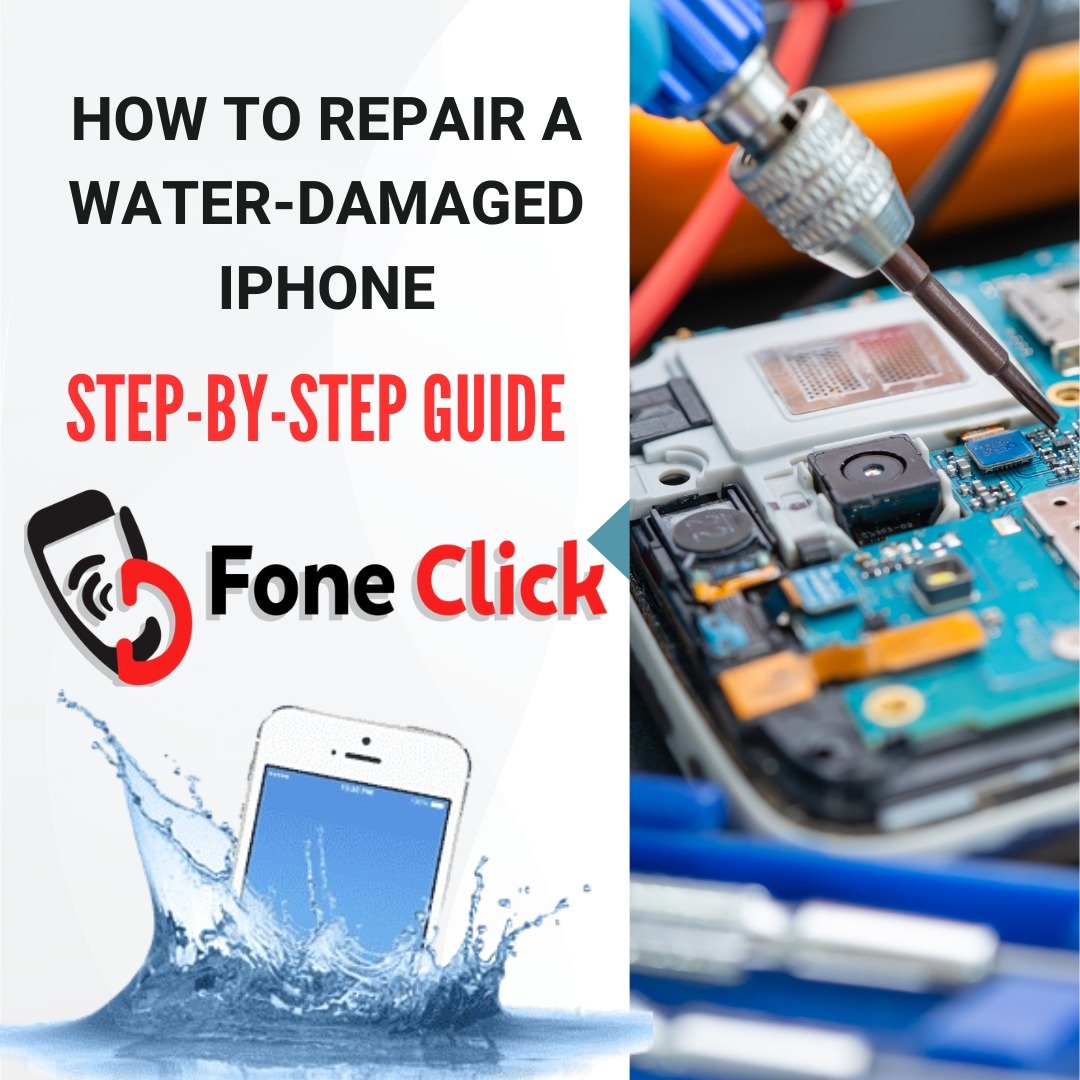Accidentally dropping your iPhone in water is a stressful experience, and it can happen in a split second. Whether it’s a lake fall, drowning, or rain, water damage can cause your iPhone to malfunction. Even though some new iPhones are advertised as waterproof, they are completely waterproof. When your iPhone gets wet, taking swift action can make all the difference in permanently damaging its protection. In this article, we will show you some steps to repair iPhone from water damage.

Step 1: Immediately remove the iPhone from the water
As we know iPhones are the best phones in the world. The moment you realize that your iPhone has come into contact with water, get it back immediately. The longer your device is submerged, the more likely it is to damage internal components. Time is of the essence when dealing with water damage, so act quickly.
Step 2: Block the iPhone
As soon as you get your phone back, turn it off immediately. Press and hold the side button until the slider appears, then pull the slider to turn off the device. Do not try to test whether the phone still works by turning it on or pressing the button, as doing so may short out the fluid components
Step 3: Remove the Case and SIM Card
If your iPhone has a protective case or screen protector, remove it. The bags can trap water, which can allow water to leak deeper into the phone. Again, remove the SIM card with the SIM ejector tool or a small piece of paper clip. This step ensures that water doesn’t damage the SIM card and allows the phone to be properly ventilated, allowing it to dry faster.
Step 4: Let the exterior dry
Gently wipe the back of the iPhone using a clean, dry, lint-free cloth. Special attention to the charging port of iPhone.
Step 5: Don’t use a hair dryer or frying pan
Many people mistakenly believe that using a hairdryer or putting the phone in a bag of rice is an effective way to deal with a water-damaged iPhone. Both of these methods can do more harm than good. Hair dryers can generate excessive heat, which can damage delicate parts of the phone. Similarly, while the rice can absorb some moisture, no recipe is foolproof, small pieces of rice can get stuck in the port jack or, cause other problems.
Step 6: Use Silica Gel Packets
Instead of using rice, a better way to dry out a water-damaged iPhone is to use a silica gel packet. Silica gel is a highly absorbent solvent that leaves no residue. Place your iPhone and silica gel packet in a sealable plastic bag or airtight container. Leave the phone in the container for at least 24 to 48 hours to dry completely.
Step 7: Allow time to dry
Patience is key when trying to repair a water-damaged iPhone. Avoid the temptation to look at your phone too soon by placing it in a position that allows it to be misused. Let your phone dry thoroughly for at least 24 to 48 hours. Do not attempt to charge it or connect it to another device while waiting.
Step 8: Look for signs of damage
After 48 hours, you can try to restart your iPhone. If it flashes, check for a symptom of the fault. Check the touchscreen, speakers, microphone, charging port, and other important features. If everything seems to be working fine, your phone may have survived when it gets wet.
But if your iPhone doesn’t turn on or if certain functions don’t work properly, you could have more serious internal damage that can’t be prevented at home.
Step 9: Go to a professional repair shop
If your iPhone doesn’t turn on after drying, or exhibits other signs of water damage (such as distorted sound or an unresponsive screen), it’s time to take it to a professional phone repair shop Technicians’ equipment and specialized procedures inspect components and provide necessary repairs. In some cases, damaged parts can be repaired or replaced and the phone recovered.
Many repair shops offer water damage services and can perform advanced procedures such as ultrasonic cleaning to remove corrosion and restore the phone’s strength
Step 7: Allow time to dry
Patience is key when trying to repair a water-damaged iPhone. Avoid the temptation to look at your phone too soon by placing it in a position that allows it to be misused. Let your phone dry thoroughly for at least 24 to 48 hours. Do not attempt to charge it or connect it to another device while waiting.
Step 8: Look for signs of damage
After 48 hours, you can try to restart your iPhone. If it flashes, check for a symptom of the fault. Check the touchscreen, speakers, microphone, charging port, and other important features. If everything seems to be working fine, your phone may have survived when it gets wet.
But if your iPhone doesn’t turn on or if certain functions don’t work properly, you could have more serious internal damage that can’t be prevented at home.
Step 9: Go to a professional repair shop
If your iPhone doesn’t turn on after drying, or exhibits other signs of water damage (such as distorted sound or an unresponsive screen), it’s time to take it to a professional phone repair shop Technicians’ equipment and specialized procedures inspect components and provide necessary repairs. In some cases, damaged parts can be repaired or replaced and the phone recovered.
Many repair shops offer water damage services and can perform advanced procedures such as ultrasonic cleaning to remove corrosion and restore the phone’s strength. Patience is key when trying to repair a water-damaged iPhone. Avoid the temptation to look at your phone too soon by placing it in a position that allows it to be misused. Let your phone dry thoroughly for at least 24 to 48 hours. Do not attempt to charge it or connect it to another device while waiting.
Step 10: Backup and save your Data
Once your iPhone has been successfully restored, the next step is to back up all your important data. Regular backups are important, as water damage can hurt your phone’s performance for a long time even after repair. It’s always a good idea to store your contacts, photos, documents, and other files in the cloud or the computer. Also, visit the best Apple store Brighton uk.
Prevention of future water damage
While you can’t completely avoid accidents, there are some things you can do to minimize water damage in the future.
- Invest in a high-quality waterproof material.
- Avoid using your phone near water or rain.
- Be careful not to take your phone near the sink, bathtub, or pool.
Conclusion
Water damage can be devastating, but taking immediate action and following the right steps can save your iPhone from permanent damage. While in-house methods, such as silica gel drying, can help in minor cases, more severe damage often requires professional technicians. Always remember, prevention is better than cure—taking the first steps to protect your iPhone from water damage can save you a lot of trouble in the long run.




